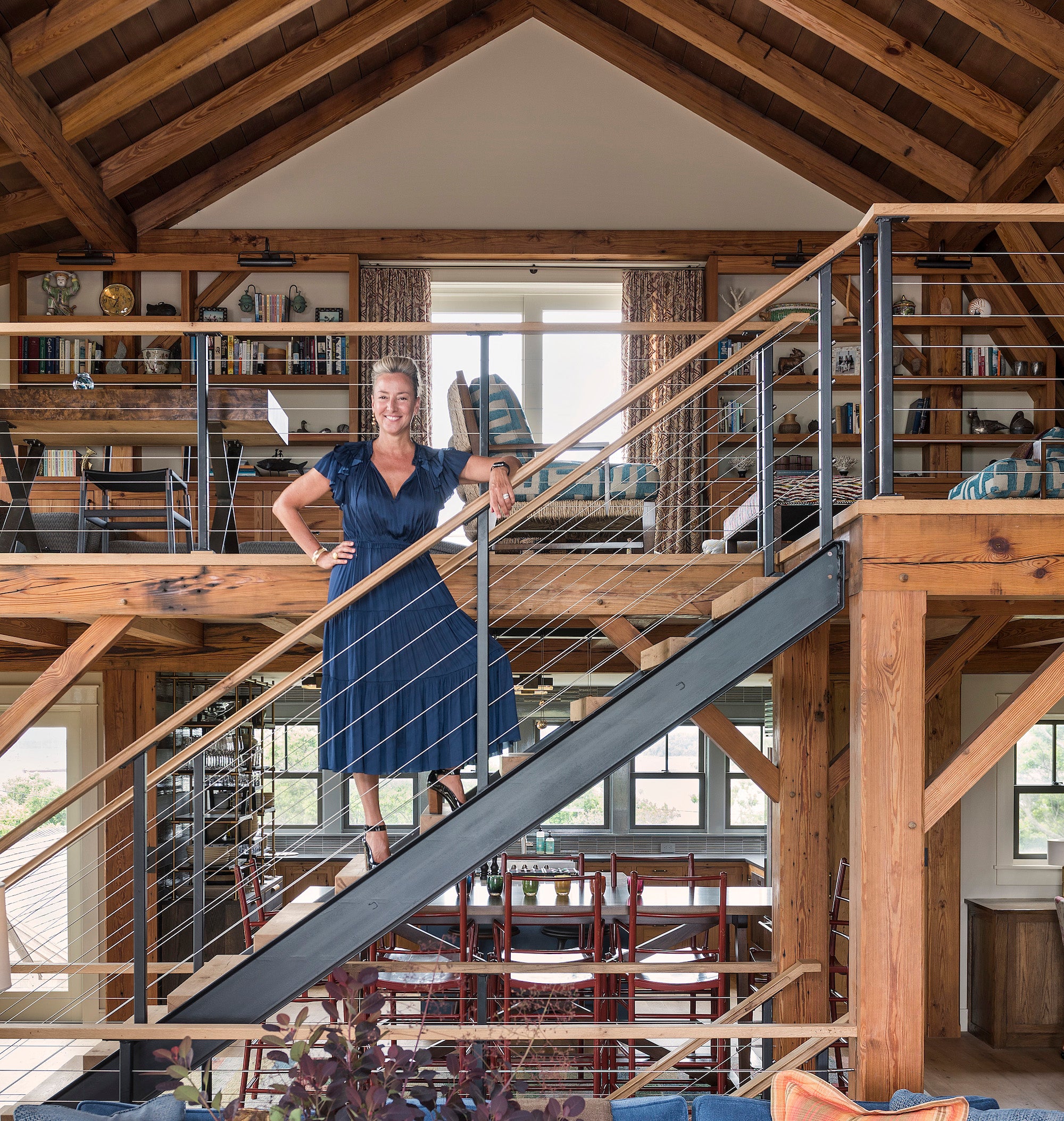The 50 States Project is a series of candid conversations with interior designers across the country about how they’ve built their businesses. This week, Providence, Rhode Island–based designer Courtney Taylor tells us how she ended up working with her mother for more than two decades, why she’s working full-time with a furniture designer and delivering projects where the furnishings are completely custom, and why she believes the key to financial success lies in explaining your work.
So often, designers in this series tell me they had no idea design was a profession when they were young. But when you grew up, you had a front-row seat to how a design business works.
My mother [Nancy Taylor] started this business in 1967, the year I was born. We worked alongside each other for 23 years, and I’ve ended up completely running it since she retired five years ago. But I actually went to Parsons School of Design in New York for apparel design.
How did that childhood experience shape your sense of the possibilities?
Well, it absolutely molded who I am as a person today. There was always a focus on taking care of your things and using design and possessions to create a space that reflects who you are. I was always interested in collecting things and [creating] my environment, even from an early age. In fact, when I graduated from high school, my mother gave me a beautiful ironstone pitcher—I’m pretty sure I was the only person in my high school class that got an antique as my graduation gift.
But she never jammed it down my throat—she didn’t have to. When most people find out that I’ve worked with my mother all these years, they’re like, “Oh, my God, how did that go?” And I’m like, “Listen, we never disagreed, not even for one second.” I’ve always told her, “I don’t think I could do this if I wasn’t doing this with you.” We had an amazing run together, and now she is happily retired and doing very well. And all my clients are like, “How’s your mother?”
When did you pivot from apparel to interiors?
I worked in the apparel industry for a few years, but I got married and started a family young. I had started a golfwear company and was flying to Hong Kong four times a year—that kind of business is not very conducive to having young kids. We were living in New York with a tiny infant and a Jack Russell terrier, and it was so hard. So when my husband at the time got a job at Fidelity in Boston, I thought, “This is our escape plan.”
I was born and raised in Providence, so we moved back to my hometown and my husband was commuting to Boston. Then I had my second child, and I called my mother up and said, “I can’t stay at home with these children for one more minute.” I was like, “I will do anything—I’ll empty the trash, answer the phones—please just find a little something for me to come in and do.” So that’s how it all started.
She took me under her wing and taught me everything that I now know. I never had any formal training in interior design. Though, of course, my background is in apparel with fabric and color and form—it really was a sideways slide into this new profession. Over time, I started taking my own independent jobs outside of hers, and then we worked together as partners for years. On some of the more significant projects, we worked together, which was amazing. We really grew the business together, and now I work all over the country, and I’m currently working in the U.K. as well.
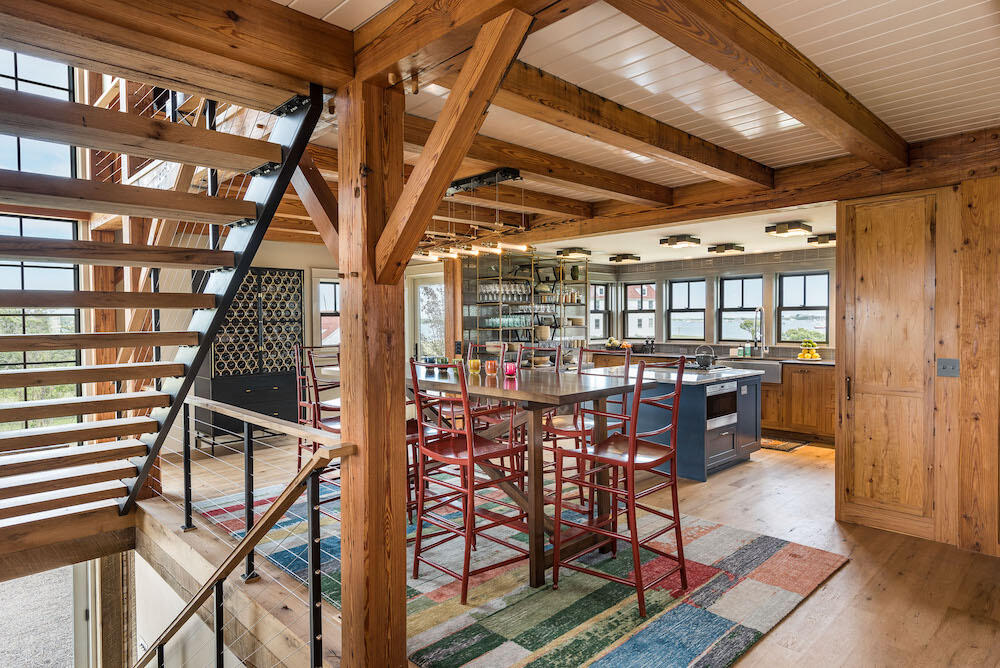
We interview so many designers who don’t have a succession plan—they don’t know what to do with their business when they want to retire. Was it clear to both of you that this was the direction you would go?
As soon as I joined the firm in a meaningful way, we knew that it would make sense for me to take it over. It’s a wonderful business. I tell all the young people who come to our office to intern that it’s a fabulous way to earn a living.
My mother ended up working full-time until she was 82 years old. It’s like, who does that? But we just kept getting these amazing projects that we couldn’t say no to, and she was still loving it. We were traveling and doing all these interesting trips. When she decided to retire, we [developed] an exit plan where she wouldn’t take on any new projects. As her existing projects went into mop-up, she kind of quietly stopped showing up at work.
I love that you said it’s a great way to earn a living. So often, the financial side is the thorniest for a design firm. How have you made it make sense?
We bill by the hour. There’s a scale of who [on our team] earns what while on a job, and we keep time logs the way a lawyer might. And then if you purchase anything, we get industry pricing and mark it up a certain percentage. So we earn two ways: by the hours we work and on the product that we sell.
It’s been pretty seamless. I mean, we’ve never even raised our markup, and it’s the same markup for every client. That’s how I support my office and earn a living, and it hasn’t ever really been a problem.
What is the secret to the financial health of a design business?
One of the most important things is to understand what you’re selling and be able to sell it—to articulate it. You can have the most beautiful designs, but if you don’t know how to convey these design concepts to your clients … They often don’t have the powers of visualization, so you really have to know what you’re doing, have confidence, and have the skill set of selling things.
The other thing is doing what you say you’re going to do. My mother always said, “One way to be a cut above the pack is if you say you’re going to do something, then you have to absolutely follow through.” Because so many times, things are promised and people don’t deliver. That’s not how you actually seal the deal and make money and get these jobs installed and move on to the next.

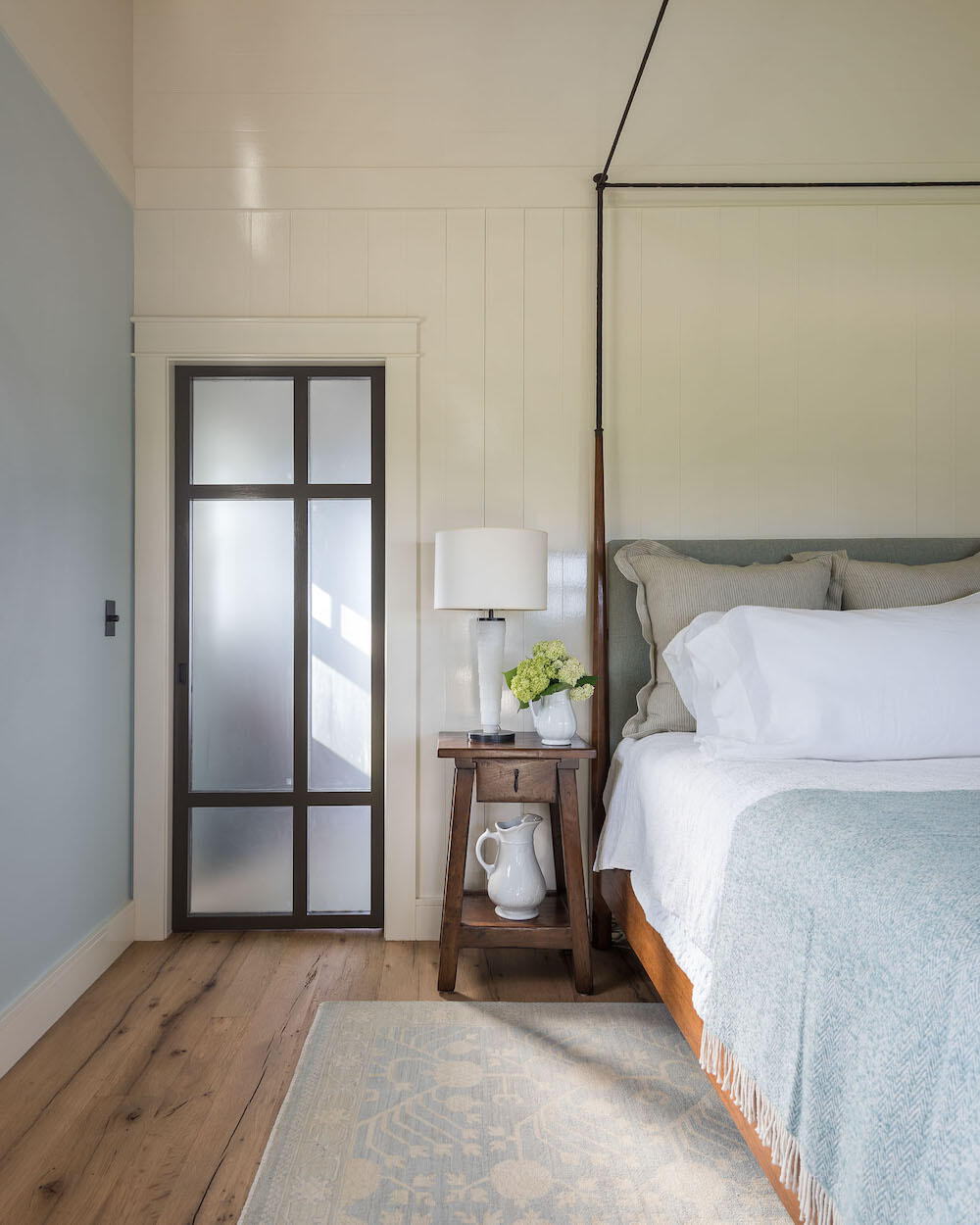
What’s the tool kit you tap into to translate your vision in a way that gets the client excited about your ideas?
We have a whole system of how we actually design and manage our projects for our clients, and no matter where they are—or how large or small—it always starts with the discovery phase. That’s where we sit down with our clients and fully understand what they want out of the project: what the scope is, how they live, how they entertain, if they are right- or left-handed, if they are fussy about certain things.
Once I have a good understanding about what they want and the scope, I draw up their plans. It never is about the fine furnishings—that comes at the end. I first need a map of what I’m doing. So I’ll come up with a floor plan, or lay out kitchens, map out the decorative lighting—all that kind of stuff. Then I’ll pull materials, bring them back to my studio, and start scheming. We have a large studio with giant bulletin boards on the walls, and I just throw everything up on the wall. I live with that for a certain amount of time, and I keep revisiting it and editing it. Meanwhile, I’m looking for furniture, lighting, construction materials like tile and stone, wallcoverings and wood flooring.
Then it’s time to invite the clients in for a presentation. By that point, I have all the materials laid out or up on the walls, and binders with visuals of all the furniture, as well as plans of the furniture drawn to scale and elevations of what the bathrooms and kitchens look like. These binders become the bible of the job—we give one to the contractor and one to the client, and it is a true record of everything that we’ve proposed or are putting into the house. We also include schedules for our clients—the finish schedule, decorative lighting schedule, plumbing fixtures schedule, and on and on, for tile and stone, decorative hardware, appliances. We even include a light bulb schedule. It’s incredibly helpful for our clients. In five years, if they have any kind of water damage or want to repaint, they know the brand of paint, the finish, the color numbers—it’s all very organized. And that goes a long way when the clients show up for their presentation: We’ve documented what’s going in their house from several different angles; it’s all organized, and our clients know exactly what they’re getting.
From there, if they wish to move forward, we will price everything up per item, and everything’s clearly documented. Nothing ever gets ordered that they don’t have a complete understanding of.
Do all clients want that much detail?
I absolutely insist upon it, because the last thing I want is for my client to get to the installation day and not completely understand what they’ve purchased. It’s really to their benefit, but it also protects my business. I’m a very careful person, and this is a serious business. We have over 40 projects open right now, and we have to organize and run them exactly the same way. That level of documentation ensures that there aren’t mistakes. We also have a lot of money flowing in and out of the office, and we have to be very organized and document everything thoroughly, or else it could become a mess.
Do you have any go-to software or systems?
I have invested in Studio Designer, and we run our business with that to keep all of the financials organized. It’s now my 26th year in the business, and it’s a well-oiled machine.
The funny thing is, I still call my mother every morning on my way to work and every night on my way home, and we talk about the business—to this day! She’s very much involved, but very not involved, if that makes sense. For her, I think it’s fun to keep tabs on all the clients and everything that’s going on, and I always talk to her about the bottom line.
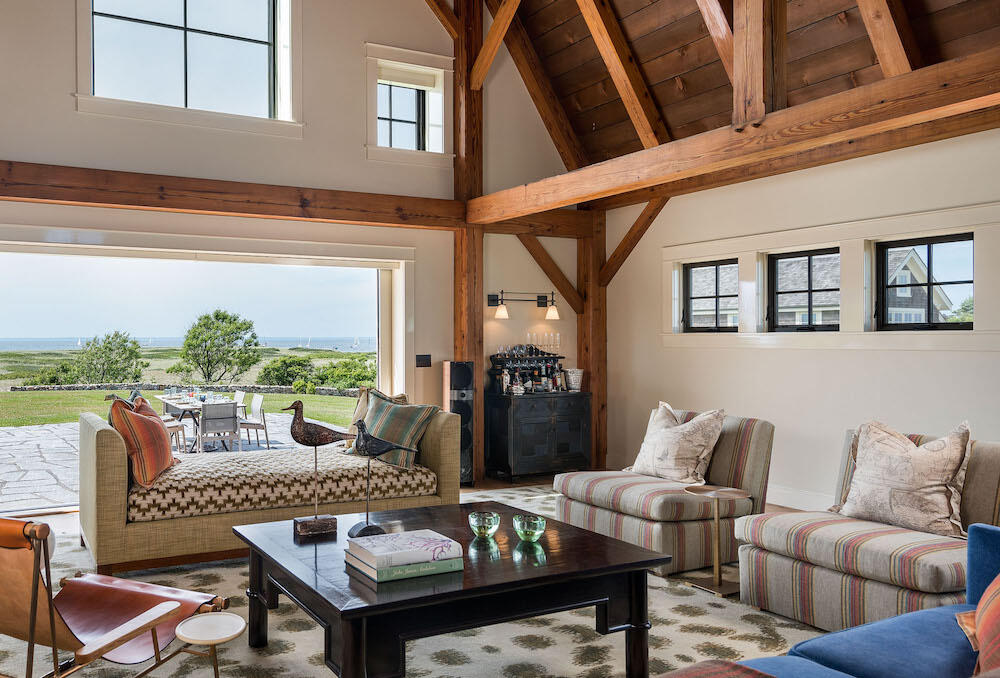
Forty jobs in a lot to manage. What does your team look like to make that all happen?
When my mother left, I felt the need to downsize—when you take a business that has had two full-time, hardworking dedicated designers and one decides to retire, I felt very apprehensive about keeping the office the same size. I was like, “That’s a very fast dance if I’m going to support all these people.” So we laid some staff off and we downsized the actual physical office.
But then, because of Covid and the state of building right now, our business exploded. We’ve grown so much, and our office is now the largest it’s ever been. There are seven of us in the office full-time: me, an office manager who has been with us for decades—I call her my controller—and then two senior designers, one project manager and two assistant project managers. I also have an architect who is a contractor but works on our projects full-time. He’s an absolute genius and so dedicated to our work, so I really consider him a full-time employee. And then I have a wonderful, almost full-time relationship with a Parsons alum, a product designer named Elisa Carlucci, who I work with extensively designing custom furniture and lighting for our clients. So all in all, I have a team of nine.
That’s pretty amazing. Tell me more about those custom pieces.
A lot of our clients sign up for custom furniture and lighting. It’s a pricey thing to get into, but I have several projects right now where we are actually designing 100 percent of the product that’s going into these residences—every single piece of furniture and light fixture is a one-off. So that’s a huge part of my business, and Elisa and I collaborate almost daily.
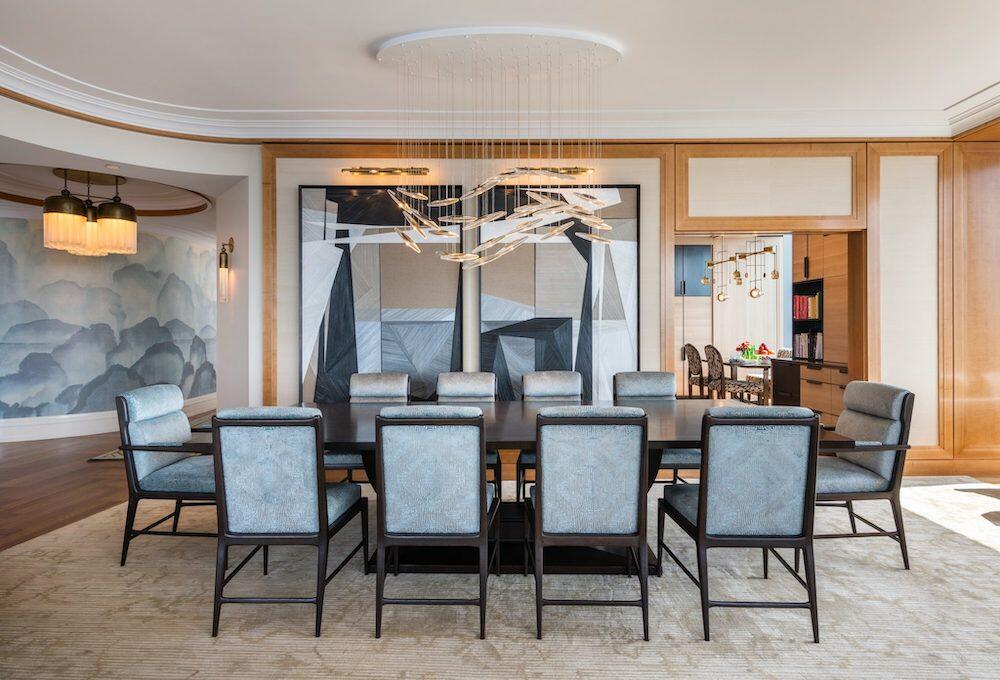
What is your role in the office, and where are you involved in each project?
I’m the boss and team leader, even if a reluctant one—because I am such a believer in the saying, “It takes a village.” I’m always self-conscious about my role, because my staff is so dynamic and amazing. We are enmeshed so tightly, and I rely on everybody for their specific jobs—I certainly could never do this alone.
As for my role, I do the majority of the selling, and the design work is driven by my vision. For example, with the product design, the two of us collaborate, but Elisa does all of the research and these beautiful illustrations. Then she’ll come to me with several designs, and I’ll be like, “Oh, I think we should show them this one, or these two for choices.” I’m the ringleader of the collaboration with everyone.
Do clients only see you, or do they also interact with your team throughout the process?
There’s a project manager assigned to every project, and they do a lot of client interfacing as they create all the financial proposals, place the orders, and answer any questions the clients might have. Pam, who runs the office, does all the billing, which is a huge job.
I say to my staff all the time: “The design work is fun, but you have to place the orders.” That’s how we get paid. We’ve got to close the deal. You could have a design proposal, and it could go really well, but we’ve got to get that pricing out. We’ve got to get the deposit money in and those orders placed. Because that is absolutely how you run the business and how the business supports all of us.
Is there an element of speed that’s important?
Efficiency, for sure. The lead times are so bad these days that if you procrastinate on placing the orders, you’ve already messed up your timeline. We have a rule of thumb that when we receive the check or the deposit wire, as soon as we receive the funds, those orders are placed that day. That’s a discipline that we adhere to, and it’s really important. Our clients entrust us with a lot of their equity, and I take that very seriously.
What are some of the other rules you’ve established?
It’s all about getting a process that works for you and sticking with it. That’s why we run every single project exactly the same, no matter what the size of the job: the same binders, the same schedules. We spend the time to organize it, and then I have the support staff to create the schedules, maintain them, call [to check] on the products regularly, get installation dates in place and work against them—we’re pushing all the time. This is a hard business, and people are involved, so there are human mistakes we have to fix all the time. I really do believe that in any job, there’s a percentage of getting up and doing things that you don’t want to do and just having the discipline and doing it. You have to have some kind of inherent dedication and stamina to stay with it. And I’m not the only one who has it—my whole team has it.
When you’re all pushing so hard, how do you protect against burnout?
Sometimes we do get worn out, and that’s when it’s time to have a big office party. We have two parties every year that we look forward to. One is a Christmas party—we close the office early, everyone brings presents, we go out for a lavish meal, and we drink the best wine. And then I have a pool party at my house in the summer every year. We close up shop, and I make a point of making dinner for everybody. Everyone has worked so hard for me and the business, and I take it very seriously. So I make everyone dinner—lobster rolls and crab cakes—and we sit around, drink and eat and really cut loose. It’s important to make sure we carve out the time to take a step back and have fun.

How does having a home base in Rhode Island shape the work that you do?
Rhode Island is an exceptionally gorgeous place. It’s steeped in history and has an amazing cross-section of architecture—some of the most beautiful examples of architecture, literally since the beginning of our country and right up until today, are all neatly preserved right in this tiny little state. That’s pretty darn cool. We also have amazing universities like RISD and Johnson & Wales that are regularly kicking out artisans who choose to stay here because it’s such a beautiful place. So we’ve got killer restaurants, beautiful craftsmanship, crazy architecture, artists—and people come from all over to vacation here. I get invited into some of our state’s most gorgeous historic homes to work on them. What an unbelievable privilege that is.
And not only is it incredible and an inspiration, it’s also an education having to take some famous McKim, Mead & White building with all this original interior architecture and honor it and restore it to create beautiful environments in these significant historic buildings. I live in Jamestown now, but before that, I lived on Benefit Street in Providence, and my house was from 1770, with all the original millwork. I got to live there, to be a steward of that house and lovingly restore it. At great expense, I might add.
I believe it. How much of the work is historic preservation?
About 50-50. I get a lot of people who like living in old homes and want to restore them, but there are also people building significant luxury vacation homes on sites that take your breath away. The only little drawback to working in Rhode Island is that it’s small, so there’s a finite amount of work here. I could never support my business on just Rhode Island projects.
Are your out-of-state projects for clients you first worked with in Rhode Island?
Yes and no. All [our business comes from] word of mouth, so yes, sometimes we get in with a client somewhat locally—we’re close enough to Boston that we do a lot of work there, as well—and then they buy a vacation home in Florida, or a penthouse in New York, and I get invited into those auxiliary projects. I do a lot of work in Key Largo. Once you’re doing work in a resort, like the Ocean Reef Club, the business grows through referrals. In that case, there’s a fantastic builder down there who will take clients through one of the houses that I’ve done and they inquire, “Oh, who did the interior design?” And the next thing you know, they’re calling us.
I’ve never once advertised. But here’s another little credo that my mother came up with: “Whenever there’s a mistake—even if we’re not responsible for it—you throw money at it. You spend your money to fix it, and that is your advertising budget.”
I love that.
There are always problems. Maybe something comes in broken, or by the time the order gets fulfilled, the mill has gone out of business. We are doing business during an unprecedented time. But if you physically come in and fix whatever problems that clients have, you are leaving them happy.
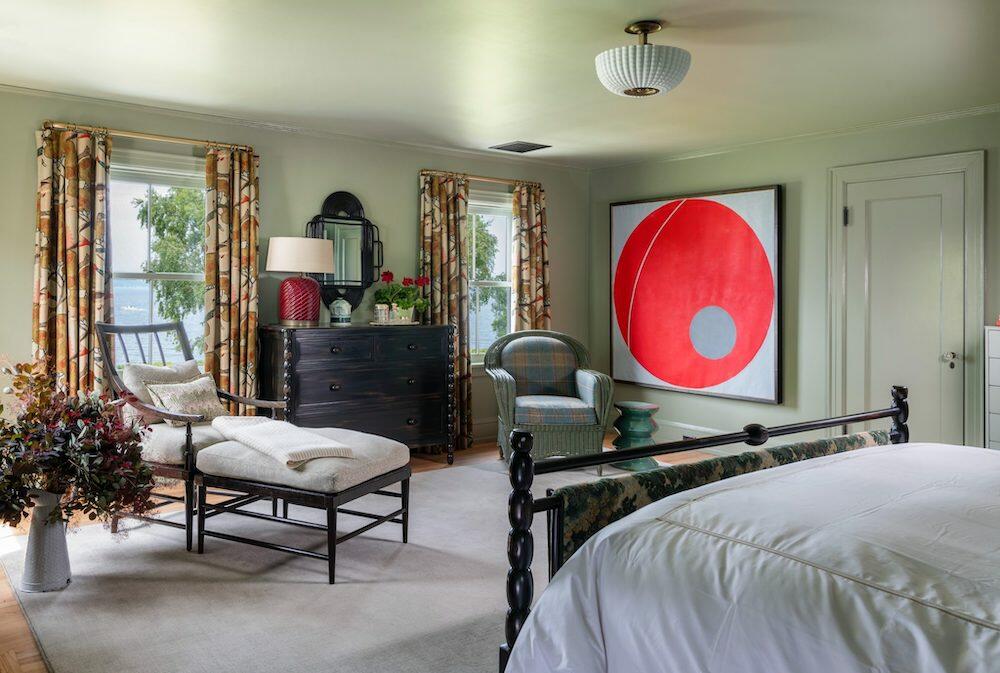
What does success look like for you today?
Well, first and foremost, a happy staff and a stable of happy clients. I certainly don’t do this for people not to be satisfied. And I want my team, who are all so wonderful, to enjoy doing it—or at least to have moments of levity and to feel proud when things are installed.
After that, obviously getting paid and earning a living. I’m not about the fame; I have no interest in that. I think that earning a decent living and having people be happy and well in a balanced life is key. And then, of course, happy children. My life is miserable when my two daughters are unhappy.
Are your kids interested in the business?
I have two daughters who are grown women, and they’re not interested. They’ve gone off and are pursuing their own career paths. And that’s fine. I think it would actually be asking for too much from the universe. I had such an amazing run with my mother, I can’t ask for more.
To learn more about Courtney Taylor, visit her website or find her on Instagram.















